Remembering Trevor Greek Lane - Service No. 17304 - Killed in Action 1918
For Anzac Day - 25 April - Lest we Forget
Time was short for many young men who went to the First World War. Trevor Greek Lane (1890 - 1918) was among them. Trevor was killed in action on a Belgium battlefield on 4 February 1918, just 8 months after first being deployed into the field of action on 11 June 1917.

Trevor’s Family Background
Trevor was the second oldest child in his family with one older brother, one younger brother and four sisters. He was born on 24 April 1890 in Dunedin, Otago, New Zealand to immigrant parents.
Trevor’s mother and father had both emigrated to New Zealand, with their parents, as young children. They had grown up in New Zealand.
Trevor’s Paternal Family
Trevor’s father, Josiah Pearce Lane was born in Devon in England. He came direct to New Zealand from Devon with his parents, William and Fanny (née Greek) Lane (Trevor’s grandparents), and other family members.
Josiah was 2 years, 3 months old when, in September 18631, he and his family boarded the ship ‘Crimea’ in London bound for Port Chalmers, Dunedin, New Zealand.
After arriving in New Zealand Trevor’s Grandfather, William, built a successful business. He started his company in 1861, initially in partnership with others. After his partnership with Richard Kingston was dissolved in 1887, the company continued as William Lane & Co2. The Company manufactured aerated water and cordial and operated in Dunedin, Oamaru and Timaru3.
Trevor’s Maternal Family
Trevor’s mother Ellen (née Hindle) Lane was born in Australia in 18624. At the time of her birth, the family was living at Sandhurst in Victoria and her father, George, was mining for gold at Golden Gully in Sandhurst5.
Ellen’s parents, George and Nancy (née Barnes) Hindle (Trevor’s grandparents) had married in Victoria, Australia in 18556. Both were from Lancashire in England.
The family moved to New Zealand in about 1863 when Trevor’s mother, Ellen, was a baby. They settled in Dunedin where George and Nancy built a successful glass and chinaware business and ran a boarding establishment. George and Nancy later retired to Christchurch, New Zealand.

Trevor’s sister is my husband’s grandmother making Trevor his grand-uncle.
Trevor’s Military Service
The information that follows about Trevor's military service has been drawn from his official military file7, unless otherwise stated. You can read a summary of information from Trevor’s official military file here and see digitised images here.
Records show that, before entering military service, Trevor worked as a Commercial traveller8. Whether he started out with the Lane family business or not, I don’t know but, at the time of enlisting with the New Zealand Field Artillery in 1916, he was employed as a Commercial traveller with King & Company Ltd. Woollen Mills based in Dunedin.
Entering the Service
The First World War began in 1914 and, in the early years of it, there was no conscription in New Zealand. The Government introduced conscription when it was found that too few men were volunteering to fill the necessary reinforcement drafts for the New Zealand Expeditionary Force (NZEF). The Military Service Act was passed on 1 August 1916 rendering healthy New Zealand men of military age (20 to 45) liable for active service overseas9. Men were selected by ballot. Initially, married men and men of Māori descent were excluded. Married men were later included in the ballot as were some Māori men10.
Trevor started the process for enlistment into the New Zealand Expeditionary Force (NZEF) in Dunedin on 2 April 1916, before conscription was legislated for, so he would have entered the service as a volunteer. It was on 2 April 1916 that he underwent the required medical examination for enlistment. The information provided at that time tells us that he was 26 years old with fair complexion, brown hair and hazel eyes. He was 5ft 10 ½ inches tall and weighed 178lbs. His religion was Wesleyan and he worked as a commercial traveller. He had good hearing and 6/6 vision in both eyes with good colour vision.
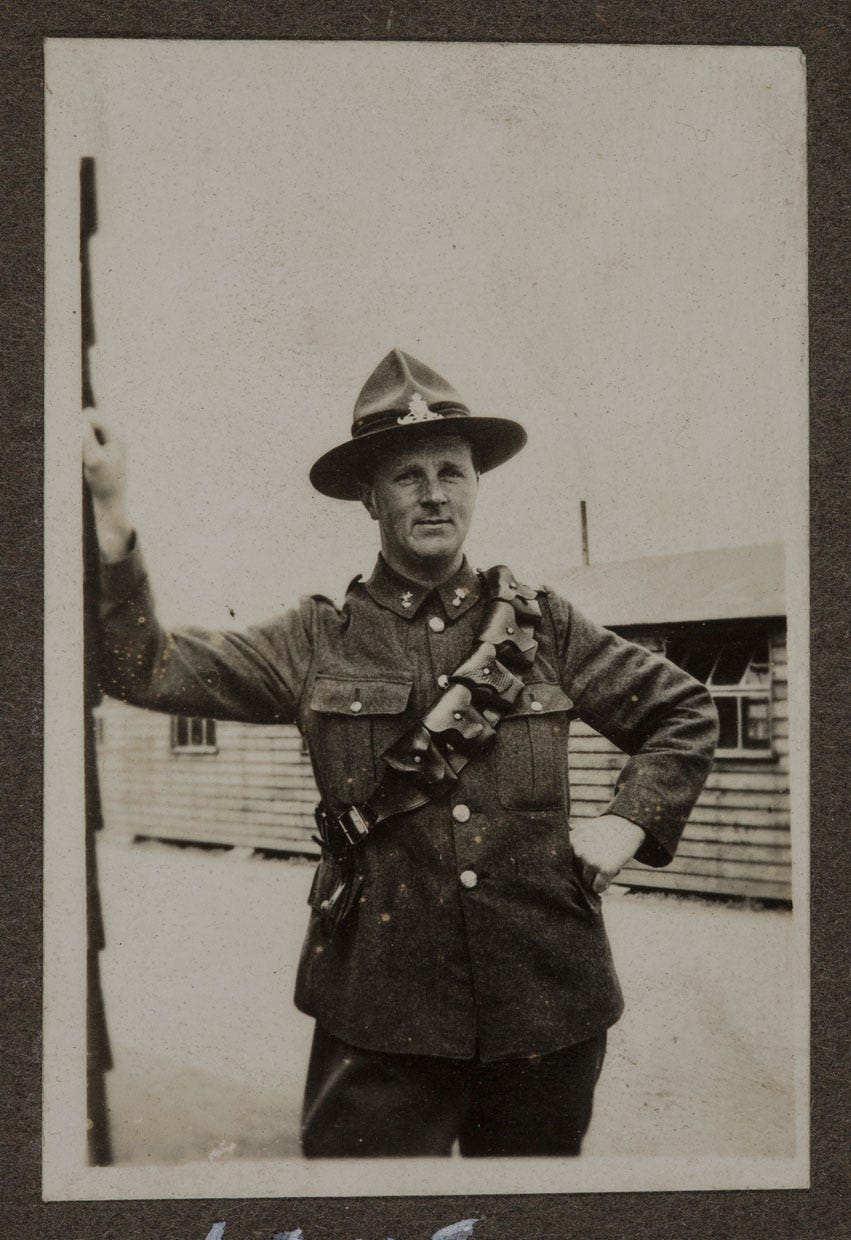
Trevor’s first official day of service was 7 June 1916 with the 11th Battery. Like other enlistees, he was sent to Featherston in the Wairarapa for training. Between 1916 and 1918, around 60,000 New Zealand men trained in preparation for military service on European battlefields. Featherston Military Camp was New Zealand’s largest training camp at that time.
Featherston Military Camp was established in 1916 specifically for the purpose of training soldiers heading to the battlefields of the First World War. It could accommodate 8,000 men at one time. The camp was larger than the town of Featherston and included 16 dining halls, six cookhouses, 17 shops, a picture theatre, hospital, and post office.
After their training, the men marched from Featherston, over the Remutaka Range, to Wellington (about 67km) for embarkation overseas11 12.
Training for War
Trevor completed his Attestation for service at Featherston on 9 June 1916. From his attestation papers we learn that Trevor was not married and had had some previous experience at signalling. He named his father, Josiah - Mr JP Lane, Lanes Ltd., 5 Hill Street, Dunedin, as his next of kin and lists that address as his own address prior to enlisting.
Trevor trained at Featherston Military Camp for a little over 6 months during which time he moved between the 17th, 19th and 20th Regiments and was promoted from Gunner to Bombadier:
11 June 1916 - posted to the 17th Regiment, New Zealand Field Artillery with the rank of Gunner
20 July 1916 - promoted to rank of Bombardier, 17th Regiment, New Zealand Field Artillery
11 Sep 1916 - transferred to Howitzer Battery of 19th Regiment, New Zealand Field Artillery - Bombardier
23 Aug 1916 - transferred to 19th Regiment, New Zealand Field Artillery - Bombardier
22 Sep 1916 - Transferred to 20th Regiment, New Zealand Field Artillery - Bombadier
It was on 2 January 1917, following his long march over the Remutukas from Featherston, that Trevor embarked from Wellington for overseas service. At the time, he is listed as a Bombadier with the 20th Regiment New Zealand Field Artillery (20th Reinforcements to the New Zealand Expeditionary Force) – Service number 17304.
The following photograph, from our family collection, is thought to be a farewell gathering in Wellington for Trevor13:
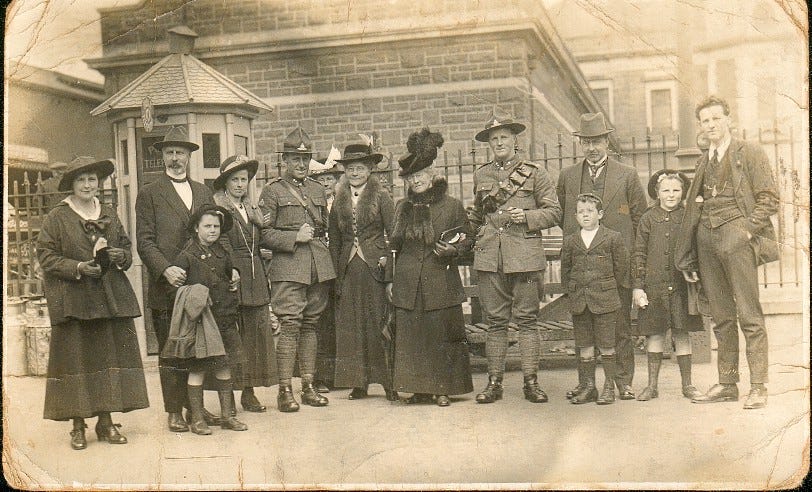
Transitioning to War
Trevor, with his Regiment, travelled aboard the steam ship ‘Opawa’ (HMNZT 7314) from Wellington to Simonstown on the Western Cape of South Africa. They arrived there on 16 February 1917.

From there the Regiment went on to Capetown and, from there, on 24 February 1917, they embarked on the ship ‘Walmer Castle’ for England.
During this trip, Trevor was admitted to the ship’s hospital for an ‘abscess of meatus’; admitted on the 6th of March and discharged a day later on the 7th.
The Regiment disembarked at Devonport in England on 27 March 1917 and marched into the New Zealand Field Artillery Depot at Aldershot. It isn’t clear why, but at this point, Trevor reverted to the rank of Gunner.
It appears that the 20th Reinforcements remained in Chadderton for a couple of months. Perhaps there was more training to be done. It wasn’t until the 30 May 1917, that Trevor left England, from Chadderton, for France. On 2 June 1917, the 20th Regiment marched into the camp at Étaples and then, on 10 June 1917, they marched out to the Division.
On the Western Front
On 11 June 1917, Trevor was posted into the field of action - 11th battery, 3rd brigade of the New Zealand Field Artillery. This was immediately after the Battle of Messines. The New Zealand Division had taken part in the capture of the Messines Ridge on 7-9 June 1917.
The Third Battle of Ypres opened on the last day of July 1917, two months before the New Zealand Division was moved into the fighting. While not involved in the initial stages, the New Zealand Division had become involved by late September. Considerable progress had been made by the end of September, when the New Zealanders arrived, but this had been costly and the enemy was still in possession of the main line of the Passchendaele ridge at many points. When the New Zealand Division relieved the 59th Division in the St. Jean sector east of Ypres, preparations for an attack against a front of about seven miles, extending from the Menin road to the Ypres-Staden railway, were being completed15.
Two major attacks that the New Zealand Division took part in during the latter part of 1917 were on the Passchendaele ridge. The first was at Gravenstafel on 4 October. This was considered a relative success. 340 New Zealanders lost their lives. The second, on 12 October, was a complete failure with 843 New Zealanders killed in just a few hours; the highest one-day death toll suffered by New Zealand forces overseas16.
The attack on 4 October 1917 took the form of a creeping barrage; five barrages to take the infantry forward, break up counter-attacks, and afford protection after the objectives of the attack had been captured, and while they were being consolidated. Trevor’s Brigade, the 3rd Brigade New Zealand Field Artillery, along with the 1st Brigade, formed the ‘E’ sub-group and were under the command of Lieutenant-Colonel Falla17.
On 12 October 1917, the New Zealand Division was involved in an attack between the Ypres-Roulers Railway and Houthulst Forest. The objectives included Passchendaele Ridge and the village of Passchendaele. Neither objective was achieved, largely due to lack of preparation and, amongst other things, muddy conditions had made it difficult for the Batteries to get their guns into position. Those that had reached the forward positions had soft and waterlogged ground to contend with –
'the guns simply sank up to the axles after the first few shots had been fired, and in some cases before a shot had been fired' … making the artillery barrage 'weak and patchy'18.
What kept the New Zealand guns firing largely came down to the ingenuity of the men firing them:
'The provision of stable platforms is an essential to good shooting at any time; but on the 12th it was only by desperate expedients that guns were kept in action at all. All the New Zealand batteries fired in the barrage; the gunners secured logs, odd bits of timber, anything, in fact, that would provide a foundation, and so contrived to keep their guns in action’19.
In the first week of December 1917, the New Zealand Field Artillery moved into the line in support of their own troops. The gunners were taken up from Boeschepe in motor lorries to take over the guns of the artillery then covering the Division. The 11th battery of the 3rd brigade, along with the 13th and 14th batteries were close together near the Westhoek Cross Roads20.
During December 1917, with Germany returning troops to Europe from the Russian Front, the British adopted a defensive policy and the New Zealand Division followed suit. Preparations were made in order to be ready for a predicted large-scale attack from the enemy. This was not straightforward as the positions were being constructed on land that was - 'but a wilderness of shell holes, half filled with water'. Most of the material needed for construction had to be salvaged and the work had to be done under camouflage to conceal positions from observations –
'It was heavy, tedious work, and often as the men dug they found grim reminders of the fighting that had ebbed and flowed on these slopes, in the unburied dead who had gradually sunk into the soft ground or had been half buried by the bursting shells … the greatest caution had to be exercised to screen the work from the prying eyes of the German airmen who came over the line on clear days spotting for their batteries or taking photographs’21 .
Throughout the greater part of December, enemy artillery was continually active with enemy shelling of the roads and battery positions at intervals. There was also an increased use of mustard gas against the New Zealand Field Artillery. In terms of lives lost, 1917 was the costliest year of the New Zealand Expeditionary Forces three years on the Western Front22.
In early January 1918, the New Zealanders increased harassing fire on enemy communications with shooting of occupied areas carried out in conjunction with the heavy artillery and machine gunners. This continued for the whole of January23.
Killed in Action
By February, it was considered that the German offensive was imminent and even more precautions were being taken to detect signs of unusual activity behind enemy lines. When it became clear that the trenches opposite the Divisional sector were held by a German division newly transferred from the Eastern Front, it was decided to take action. This took the form of a creeping barrage, fired by the Divisional Artillery in co-operation with the heavy artillery and the guns of the 66th Division.
Fire was maintained for forty minutes. It was during this shoot, that the enemy effectively engaged some of the battery positions. A direct hit struck one of the guns of the 11th Battery just as the battery was firing its last round. This appears to have been the incident in which Trevor lost his life. All of the gun crew was killed and the gun was completely destroyed24.
Trevor Greek Lane was killed in action, in the field, in Belgium on Monday 4 February 1918. He is buried at the Divisional Cemetery in Dickebusch Road, Vlamertinghe, Ieper, West Flanders (West-Vlaanderen), Belgium; Row M, Grave 125 26 .
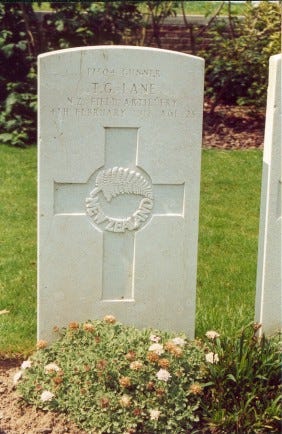
Next to Trevor in Row M, Graves 2-4 are the three men from the same gun crew who died alongside him27:
11/2119 - Hoby, S., Lieutenant Sergeant (Row M, Grave 2)
8/3268 - Murphy, P., Gunner (Row M, Grave 3)
11/2152 - Mawdsley, Bombadier (Row M, Grave 4)
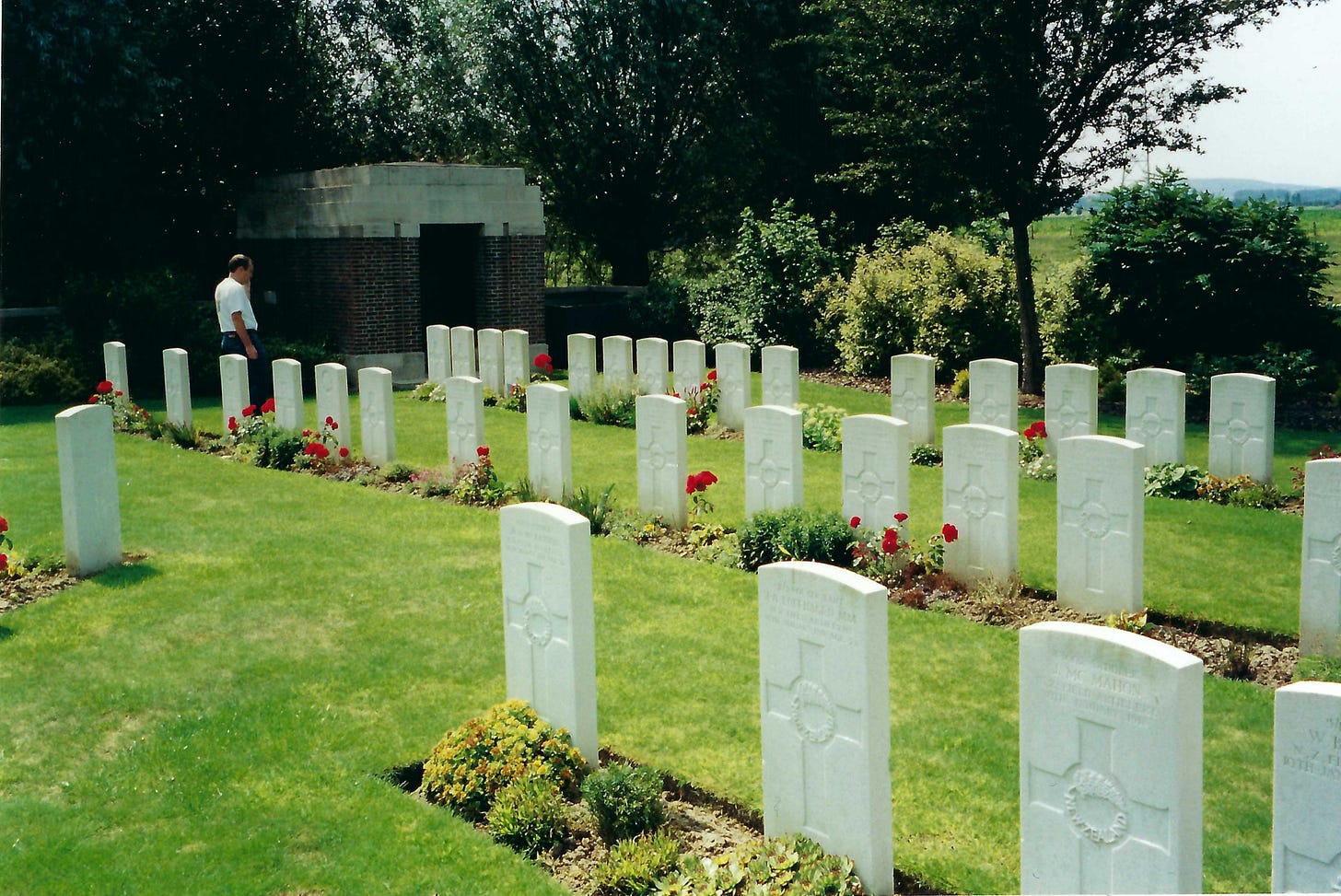
There is also a memorial to Trevor at a Lane family grave at the Southern Cemetery in Dunedin (Block 27 22/23):

Trevor had made a Will on 6 June 1916, the day before his first official day of service. He named his father, Josiah Pearce Lane, his sole beneficiary. His Will was probated on 29 April 1918. Digitised images of these documents are accessible from Archives New Zealand28
On 6 September 1922, Trevor was posthumously awarded the British Medal and the Victory Medal:
This post draws information from my family history archive on the WeAre.xyz platform
'Ship Crimea to Otago 1863' Rootsweb NZ Bound [Website]. Accessed 14 December 2022 - https://sites.rootsweb.com/~nzbound/Crimea_1863.htm
Business Notices Otago Daily Times, Issue 7853, 22 April 1887, Page 1 via PapersPast [Website]. Accessed 14 December 2022 - https://paperspast.natlib.govt.nz/newspapers/ODT18870422.2.2.5
Not to be confused with Lane’s Emulsion from Oamaru - Different product, different family (although oral family history suggests they may have been distantly related - I have yet to find the connection).
Pioneer Index, Victoria 1836-1888 Transcript via Ancestry.com. Australia, Birth Index, 1788-1922 [database on-line]. Provo, UT, USA: Ancestry.com Operations, Inc., 2010. Accessed 21 April 2022.
The 1856 Electoral Roll indicates that George had a Miners Right at Golden Gully in 1856 - Australian Electoral Commission, Canberra; Electoral rolls via Ancestry.com. Australia, Electoral Rolls, 1903-1980 [database on-line]. Provo, UT, USA: Ancestry.com Operations, Inc., 2010. Accessed 1 July 2021 - https://www.ancestry.com/imageviewer/collections/1207/images/RDAUS1901_101361__0033-00018?pId=14513421
Marriage Registration 2756/1855 Family History Search [Digital Index Search] via Births, Death and Marriages Victoria [Website].
Trevor Greek Lane - Official Military Records - Collections Item ID:R18058693, Series Number:18805 via Collections Archives New Zealand [Website]. Physical Access - Wellington Repository. Digital Access - IE18499143.
1914 New Zealand Electoral Roll via Ancestry.com. New Zealand, Electoral Rolls, 1853-1981 [database on-line]. Provo, UT, USA: Ancestry.com Operations, Inc., 2010. Accessed 5 July 2021 - https://www.ancestry.com/search/collections/1836/
'First Conscription Ballot' via New Zealand History [Website] Accessed 1 July 2021 - https://nzhistory.govt.nz/page/first-conscription-ballot-held
'Conscription, Conscientious Objection and pacifism' via Te Ara. The Encyclopedia of New Zealand [Website]. Accessed 1 July 2021 - https://teara.govt.nz/en/conscription-conscientious-objection-and-pacifism
'Featherston Camp' via New Zealand History [Website]. Accessed 1 July 2021 - https://nzhistory.govt.nz/war/featherston-camp
'Featherston Military Camp' via Te Ara. The Encyclopedia of New Zealand [Website]. Accessed 1 July 2021 - https://teara.govt.nz/en/wairarapa-places/page-8
The only other soldier in the photo is Trevor’s brother-in-law George Parsons Chapman. George left New Zealand after Trevor (April 1917). This photo is, therefore, likely to be the gathering at Wellington to farewell Trevor.
Her Majesty’s New Zealand Transport (HMNZT) 73
'Chapter V. Passchendaele' (pp.184-185) via New Zealand Electronic Text Collection, Victoria University of Wellington [Website] [From: Lieutenent J.R. Byrne New Zealand Artillery in the Field, 1914-18 Whitcombe and Tombs Limited, 1922, Auckland. Part of: New Zealand in the First World War 1914-1918]. Accessed 2 July 2021 - https://nzetc.victoria.ac.nz/tm/scholarly/tei-WH1NZAr-t1-body-d2-d5.html
' 1917: Arras, Messines and Passchendaele' New Zealand History [Website]. Accessed 1 July 2021 - https://nzhistory.govt.nz/war/western-front-1917#heading4
'Chapter V. Passchendaele' (pp.184-188) via New Zealand Electronic Text Collection, Victoria University of Wellington [Website] [From: Lieutenent J.R. Byrne New Zealand Artillery in the Field, 1914-18 Whitcombe and Tombs Limited, 1922, Auckland. Part of: New Zealand in the First World War 1914-1918]. Accessed 2 July 2021 - https://nzetc.victoria.ac.nz/tm/scholarly/tei-WH1NZAr-t1-body-d2-d5.html
‘Chapter V. Passchendaele' (pp.194-195) - See Note 18 for full reference.
'Chapter V. Passchendaele' (p.195) - See Note 18 for full reference.
'Chapter VI. Wintering in the Salient' (pp.205-206) via New Zealand Electronic Text Collection, Victoria University of Wellington [Website] [From: Lieutenent J.R. Byrne New Zealand Artillery in the Field, 1914-18 Whitcombe and Tombs Limited, 1922, Auckland. Part of: New Zealand in the First World War 191 /n 4-1918]. Accessed 2 July 2021 -https://nzetc.victoria.ac.nz/tm/scholarly/tei-WH1NZAr-t1-body-d2-d6.html
'Chapter VI. Wintering in the Salient' (pp.210-211) - See Note 21 for full reference.
‘1917: Arras, Messines and Passchendaele’ New Zealand History [Website]. Accessed 1 July 2021 - https://nzhistory.govt.nz/war/western-front-1917#heading4
'Chapter VI. Wintering in the Salient' (p. 213) via New Zealand Electronic Text Collection, Victoria University of Wellington [Website] [From: Lieutenent J.R. Byrne New Zealand Artillery in the Field, 1914-18 Whitcombe and Tombs Limited, 1922, Auckland. Part of: New Zealand in the First World War 1914-1918]. Accessed 2 July 2021 - https://nzetc.victoria.ac.nz/tm/scholarly/tei-WH1NZAr-t1-body-d2-d6.html
'Chapter VI. Wintering in the Salient' (pp. 213-214) - See Note 24 for full reference.
Trevor Greek Lane' New Zealand War Graves Project [Website]. Accessed 14 December 2022 - https://www.nzwargraves.org.nz/casualties/trevor-greek-lane
'Trevor Greek Lane' Commonwealth War Graves Commission [Website]. Accessed 14 December 2022 - https://www.cwgc.org/find-records/find-war-dead/casualty-details/93308/trevor-greek-lane/
Graves Registration Report Form via Commonwealth War Graves Commission [Website]. Accessed 1 July 2021. This report form indicates that they died on 1 February 1918 but all other references on the website say 4 February 1918.
'Last Will and Testament' Trevor Greek Lane Archives New Zealand Collections Item ID:R23029727, Series Number: 6029. Physical Access: Wellington Repository of Archives New Zealand. Digital Access - IE64263372.




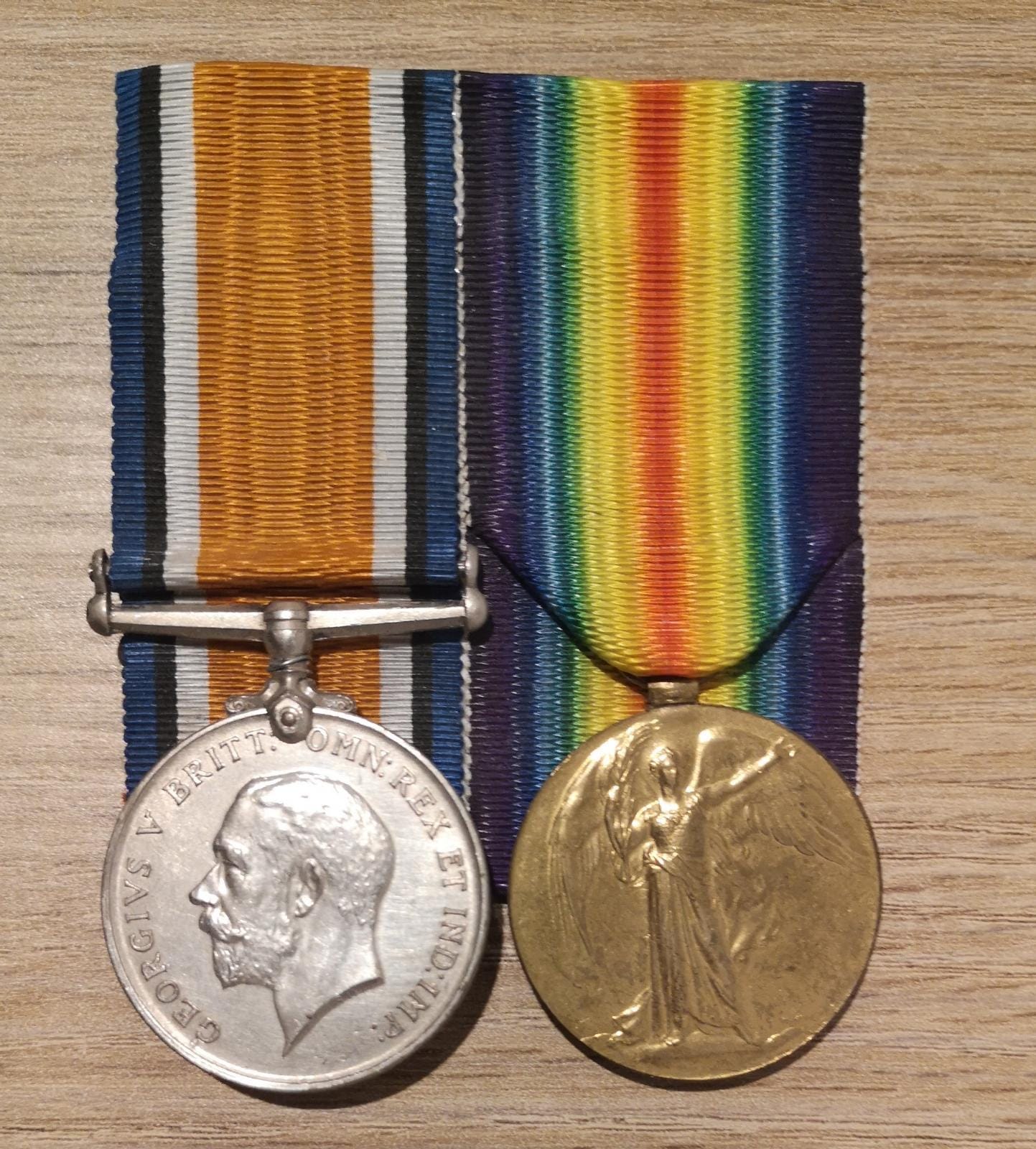
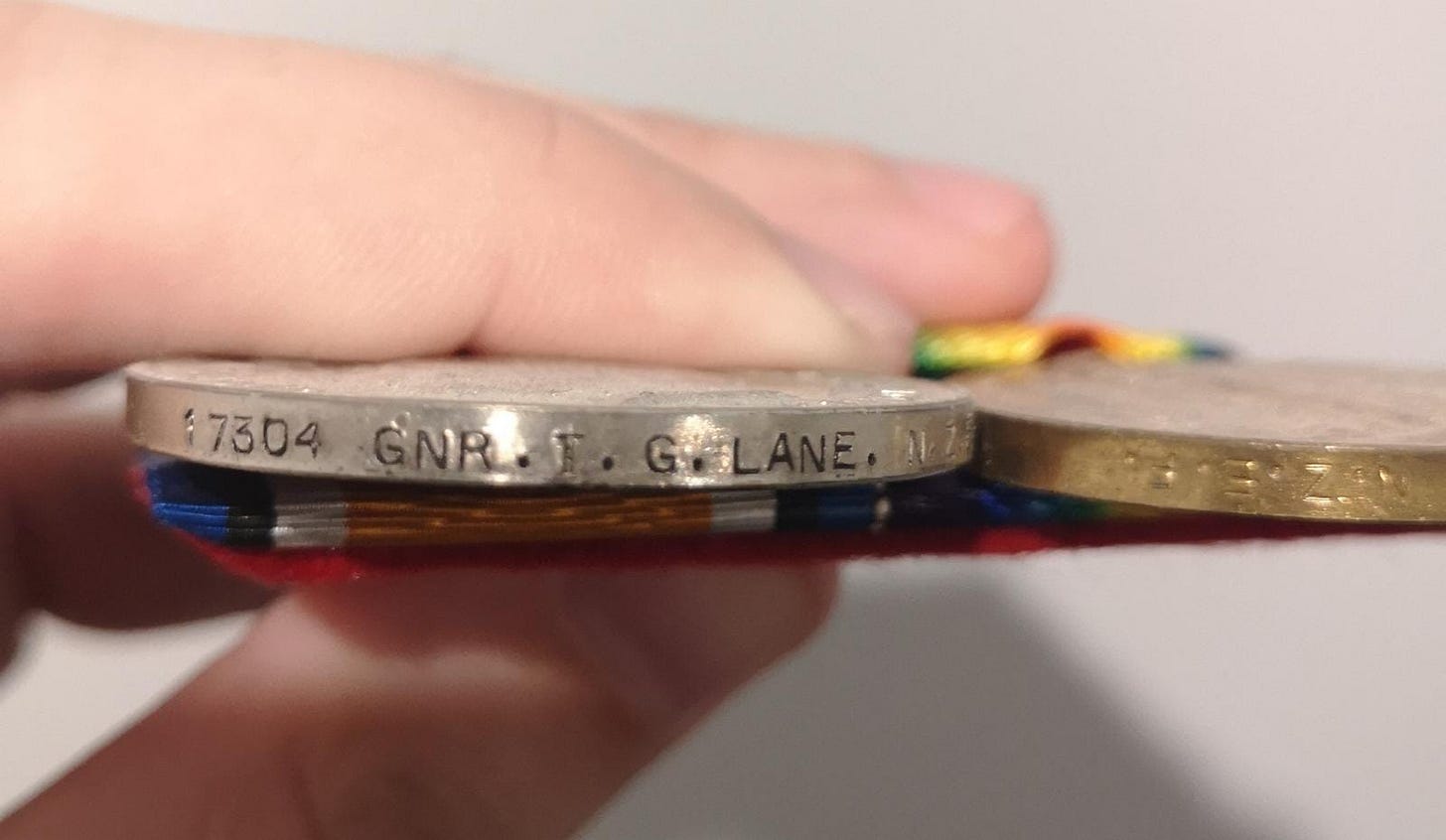
Thanks for sharing Trevor’s story Jane. By telling his story you will ensure that his legacy and the sacrifice he gave will never be forgotten
Thank you for sharing Trevor's story with us. The photos are amazing!